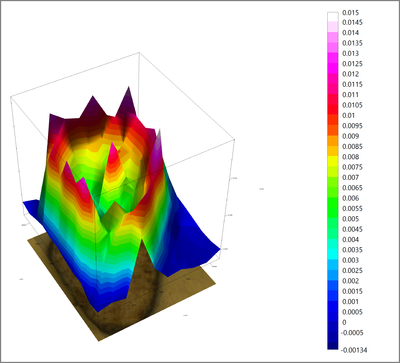Cerdanyola del Vallès, 27th July 2018 It is widely known that ultraviolet sunlight (UV) is harmful to the skin. And do it is for the hair. A research group from the Cosmetic and Textile Innovations of the IQAC-CSIC has been studying the effects of UV for a long time and has demonstrated how sun radiation causes chemical and mechanical damage to the hair: loss of colour, shine and mechanical strength. When hair is exposed to radiation the hair fibre absorbs light and this impact causes protein (mainly keratin), lipids and melanin degradation. Free radicals are produced and they oxidize and degrade this pigment so that a certain bleaching and colour decrease is observed. On the skin, UV sunlight disturbs the organization of the stratum corneum lipids, the outermost layer.
Knowing the effects of UV on the outermost layers of skin and hair (the cuticle), the IQAC-CSIC group now wants to know more about the specific molecular changes in their innermost parts: in the hair, called cortex and medulla; in the skin, in the different layers that form this tissue. Clara Barba, researcher of the project, says that "synchrotron light gives us much more resolution to see how sunlight affects, to know where damage has occurred and to obtain more detailed information about its harmful effects". Finding out specifically which effects UV have on each layer of the tissues would make possible to develop better products to protect and repair the sunlight damage.
The product chosen to assess its effect, resveratrol, is a renowned antioxidant found naturally in fruits such as grapes. For a long time its healthy effects have been highlighted in various aspects and researchers have already shown that, when it is applied topically, it strengthens the antioxidant system of the skin stratum corneum and becomes an effective means to increase the levels of antioxidants in the human epidermal tissue.
Skin and hair samples under synchrotron light
To carry out these studies, the scientists of IQAC-CSIC have analysed with the ALBA Synchrotron’s light pig skin samples, treated and not treated with resveratrol. In the same way, they prepared samples of human hair, both brown (Caucasian) and white, also treated with this antioxidant. All the samples have been irradiated using a light source simulating an UV solar irradiation equivalent to being under the sun during two days in June in Catalonia. These tissue samples have been observed with the infrared microscope of MIRAS beamline at the ALBA Synchrotron. This powerful light provides high spatial resolution and allows obtaining information not only from the surface but also from the inner layers of the skin and hair, which can be of vital importance in determining how far the radiation damage penetrates. With this microscope, biochemical information is obtained to know the chemical composition of the sample, from which it is possible to deduce what molecules are there and how they are.
In this way, researchers can visualise what happens specifically in the different layers of skin and hair after UV irradiation, as well as compare the effects between the samples that were treated with resveratrol and those that were not. The scientific group expects to see different results in those protected by resveratrol and also between Caucasian and white hair, because the latter does not contain so much melanin pigment to protect it. Melanin absorbs light energy, so white hair is more susceptible and needs higher photoprotection.

Image of a hair where lipid distribution can be observed in the inner layers of the fiber.
In memory of Víctor Carrer Vives, researcher from IQAC-CSIC.




